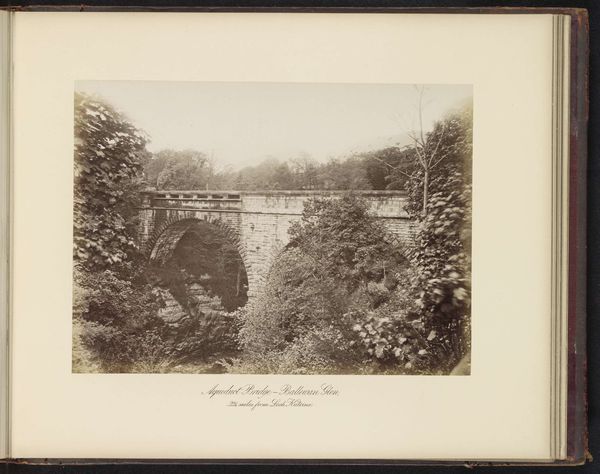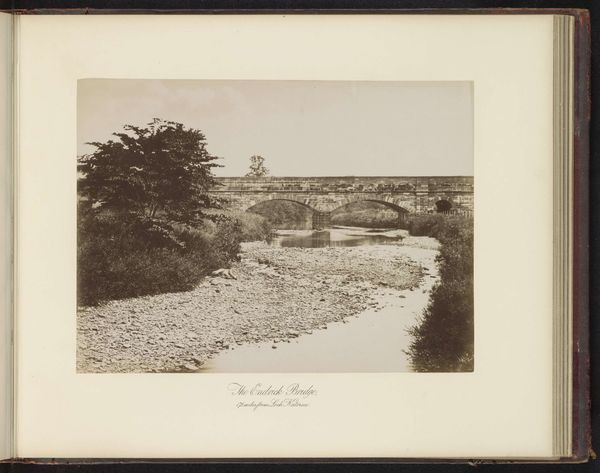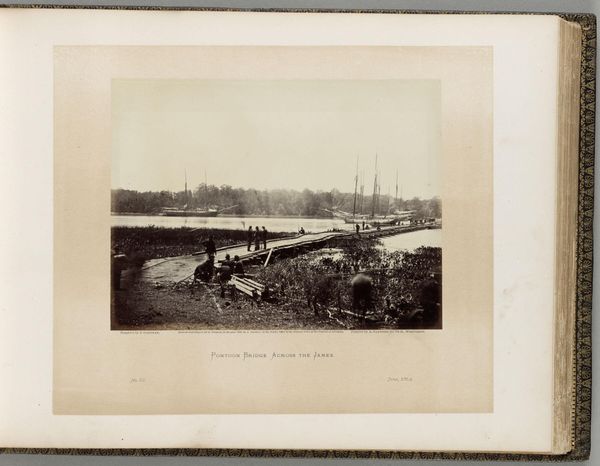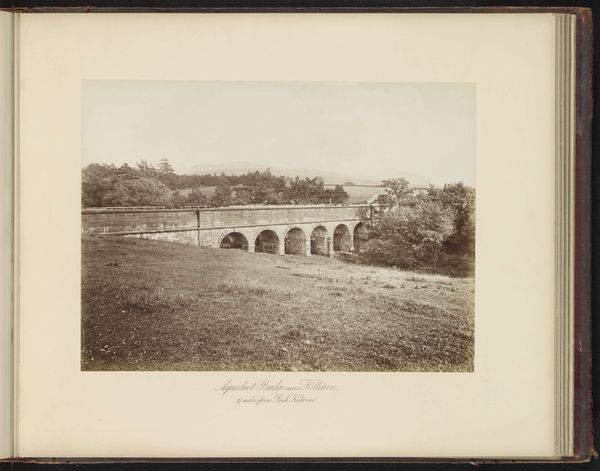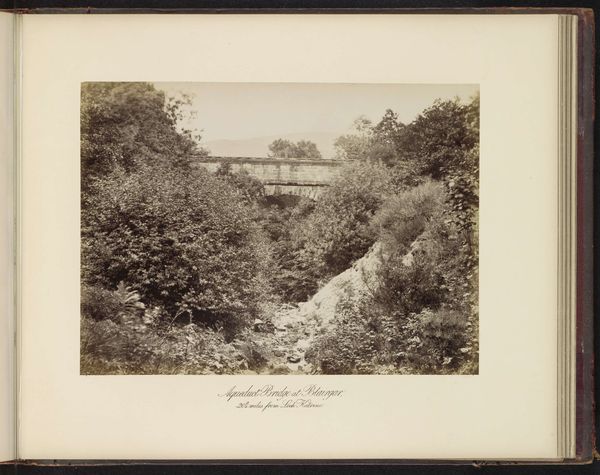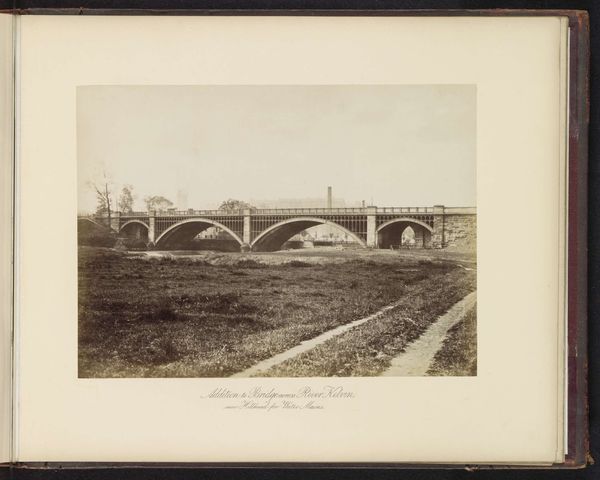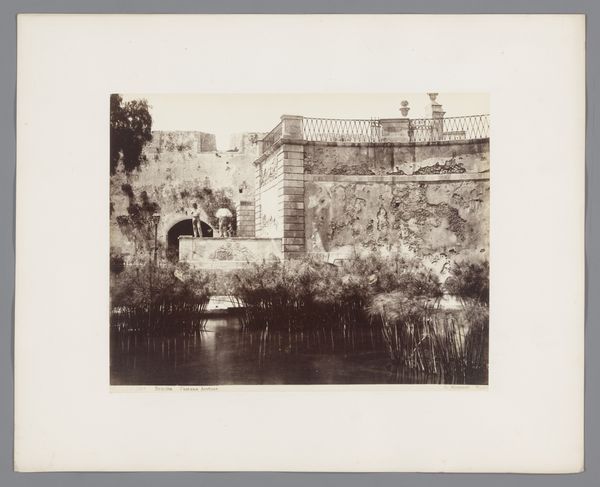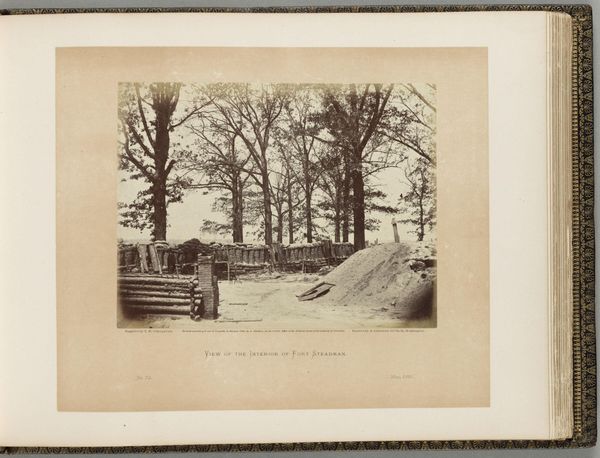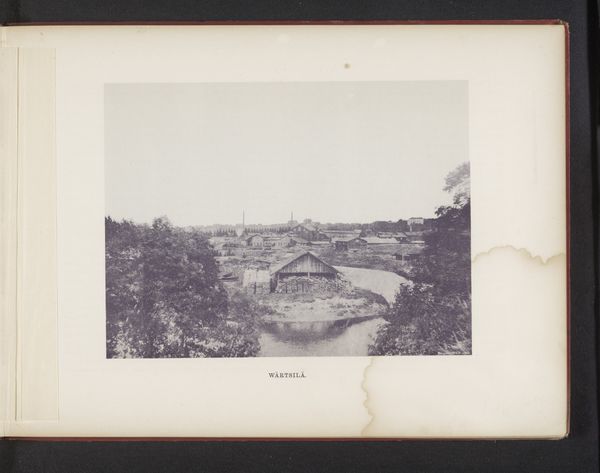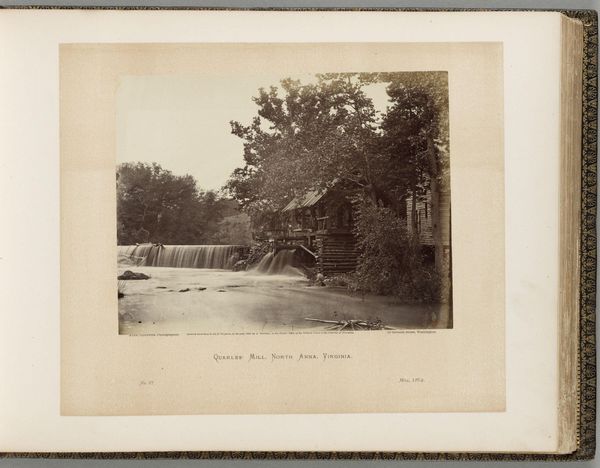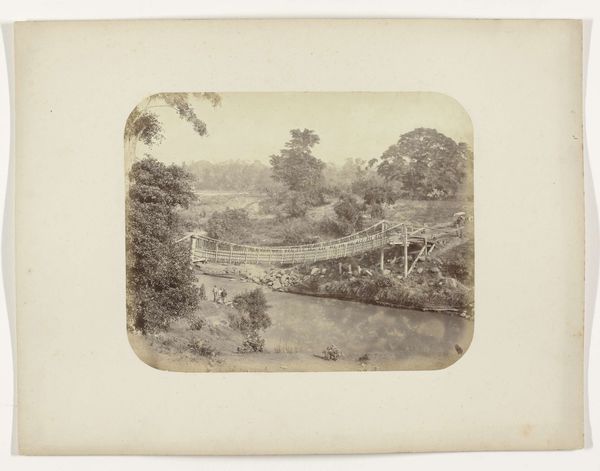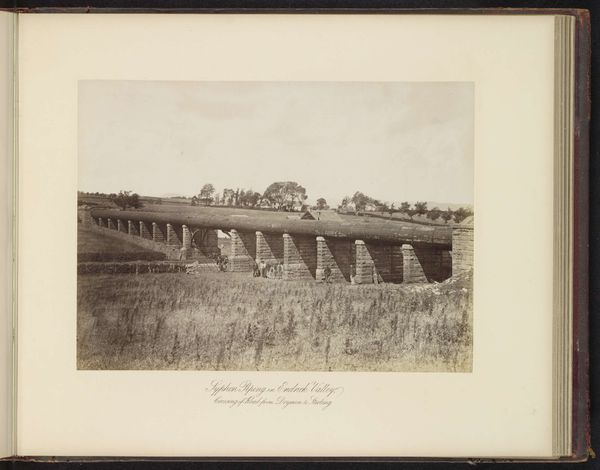
photography
#
landscape
#
photography
#
realism
Dimensions: height 206 mm, width 280 mm
Copyright: Rijks Museum: Open Domain
Curator: Here we have a photograph by T. & R. Annan & Sons titled "Addition to Bridge across river Kelvin, at Garscube for water mains," dating from before 1889. What strikes you upon seeing this work? Editor: A certain quietude. It’s a study in stillness, really. The bridge itself feels very solid, even monumental, set against the flowing water and foliage. Curator: Yes, the composition creates a strong horizontal emphasis. The bridge stretches across the frame, acting as a visual anchor against the more textured and varied landscape. Note how the arches rhythmically punctuate the span, each acting as a frame within a frame. Editor: It makes me wonder about the purpose of this photograph beyond just documentation. Given that it depicts infrastructure, perhaps there was an intended audience among city planners or engineers. We must remember that providing clean water to burgeoning urban centers became one of the preoccupations during this time. Curator: An astute point. We see realism deployed, not to capture the sublime, but for practical purposes, albeit with aesthetic considerations. The sharp focus and detail emphasize the bridge's structure. Editor: It's interesting, the bridge presents as both a solution and potentially, a disruption. Civil engineering provided a modern solution for urban expansion and sanitary improvements. This bridge provided necessary access. Yet, that access comes with consequences related to displacement and the modification of natural environments. I wonder, who specifically benefited from this 'addition'? Curator: The photograph doesn't offer immediate answers, of course. The medium of photography was developing rapidly during this time, so exploring such industrial applications is always enriching. The use of light, reflecting from the river and highlighting certain structural elements creates an undeniable harmony that tempers the potentially stark utilitarian aspect of its subject. Editor: It speaks volumes about the era. I’m left considering how what seems like progress for one group, the expansion of Glasgow for example, affects the river ecosystem, potentially displacing marginalized communities along the riverbank or altering historical land uses. Curator: Indeed, it's an artwork ripe with formal and historical narratives that compel further inquiry. Editor: It prompts us to keep critically examining the relationship between progress, representation, and power, which is, to me, essential.
Comments
No comments
Be the first to comment and join the conversation on the ultimate creative platform.
